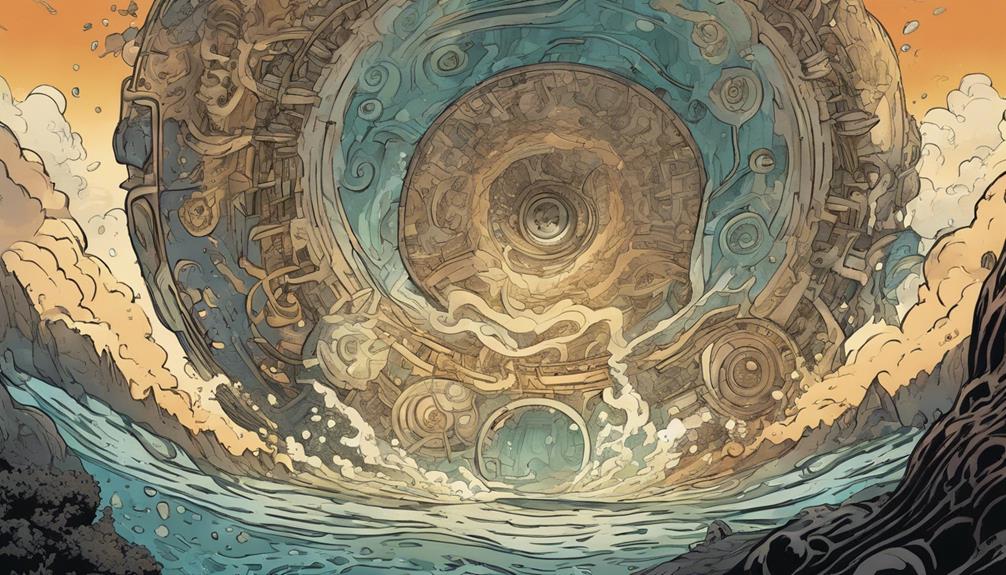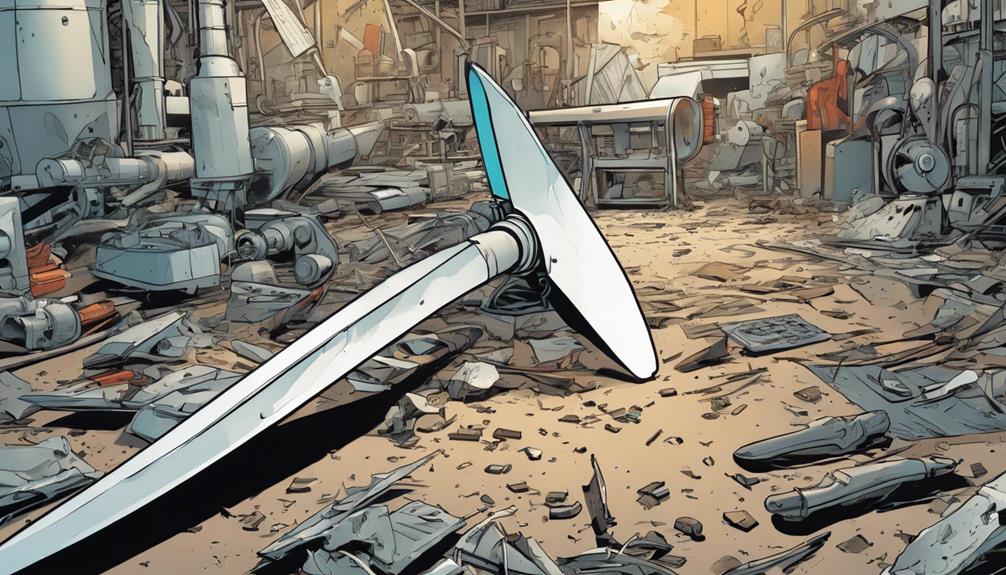As the world shifts to a low-carbon economy, wind turbines are becoming increasingly vital in the global energy mix. Advancements in turbine technology, construction, and maintenance are driving a pivotal shift in the industry. Larger rotors, innovative blade designs, and intelligent sensors are increasing power output and reducing ecological impact. With governments and industries collaborating to develop supportive policies, the future of wind energy looks promising. As innovations in technology, policy, and infrastructure continue to emerge, the potential for wind turbines to combat climate change and support biodiversity conservation is vast – and it's only the start.
Key Takeaways
- Advancements in turbine design lead to larger, more efficient turbines, increasing energy output and reducing emissions.
- Energy storage solutions address intermittency, guaranteeing a reliable energy supply and mitigating climate change.
- Governments and industries collaborate to develop policies supporting wind energy, driving the transformative shift.
- Innovations in technology, policy, and infrastructure optimize turbine performance, reduce costs, and enhance environmental benefits.
- Larger turbines with advanced blade configurations increase energy production, offsetting over 2,000 tons of carbon dioxide emissions annually.
Wind Turbine Fundamentals Explained
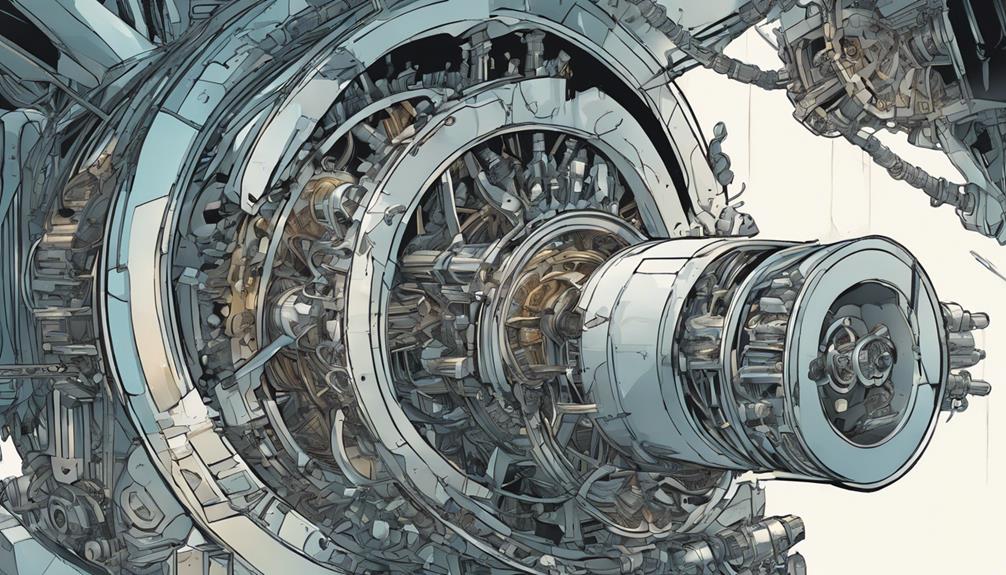
Wind turbines, the contemporary wonders of renewable energy, depend on a combination of rotor size, air thickness, and wind velocity to effectively capture wind energy and transform it into clean electricity.
These turbines generate renewable energy with minimal ecological impact, needing minimal upkeep and emitting no pollutants.
The effectiveness of wind turbines relies on rotor size, air thickness, and wind velocity. Consequently, wind energy is cost-efficient and diminishes carbon footprint, providing financial advantages.
With their capacity to function on land and at sea, wind turbines have become an essential element in the shift to a low-carbon economy.
Advancements in Turbine Technology
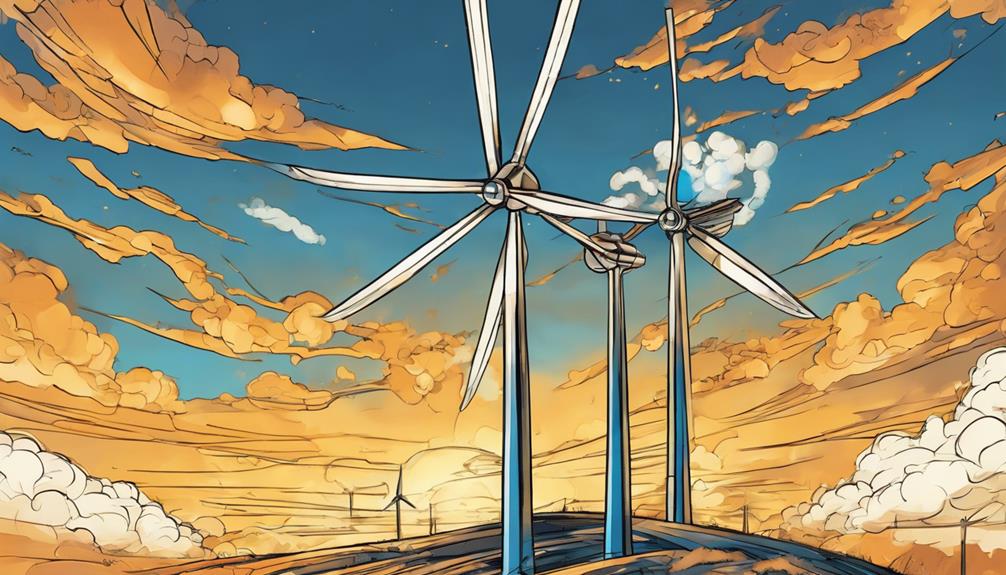
Cutting-edge innovations in turbine design and materials are revolutionizing the industry, enabling more efficient and environmentally friendly energy harvesting. Advancements in turbine technology are focused on reducing noise pollution, improving bird safety, and enhancing overall performance. These innovations are driven by the development of new materials, high-tech sensors, and advanced manufacturing techniques.
- Larger rotors: Increasing rotor diameters to capture more wind energy, resulting in higher power output and reduced costs.
- Advanced blade designs: Improving aerodynamic efficiency, reducing noise, and minimizing environmental impact.
- Smart sensors and controls: Optimizing turbine performance, predicting maintenance needs, and ensuring reliable operation in extreme weather conditions.
Efficient Construction and Maintenance
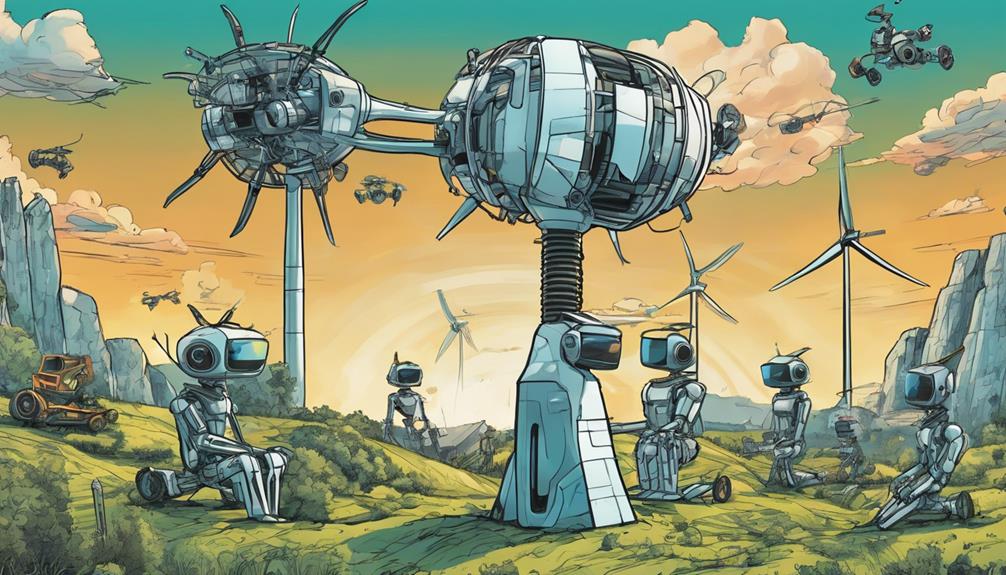
Turbine manufacturers and operators are now focusing on optimizing construction and maintenance processes to guarantee these advanced technologies operate at peak performance and minimal downtime. Precise assembly and consideration of environmental factors are important during construction.
Regular monitoring, preventative maintenance, and upgrades are necessary to secure long-term operation in extreme weather conditions. Proper fitting of components, such as blades, rotor hub, nacelle, and control systems, is essential. Emergency repairs are also important to minimize downtime and ensure reliable operation.
The Future of Wind Energy
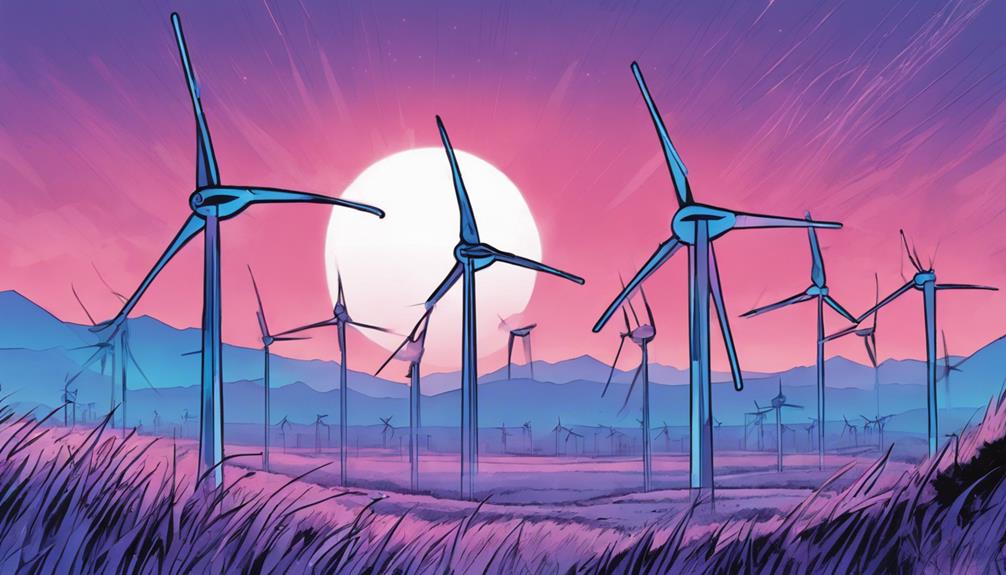
As the global demand for renewable energy continues to surge, the wind industry is poised to undergo a transformative shift, driven by innovations in technology, policy, and infrastructure.
The future of wind energy is bright, with a focus on reducing costs, increasing efficiency, and mitigating environmental impacts.
- Advancements in turbine design: Larger, more efficient turbines with advanced materials and smart technology will become increasingly prevalent.
- Energy storage solutions: Innovative energy storage methods will be developed to address intermittency and guarantee a reliable supply of wind energy.
- Grid integration and policy support: Governments and industries will collaborate to develop policies and infrastructure that support the widespread adoption of wind energy.
Environmental Benefits and Innovations
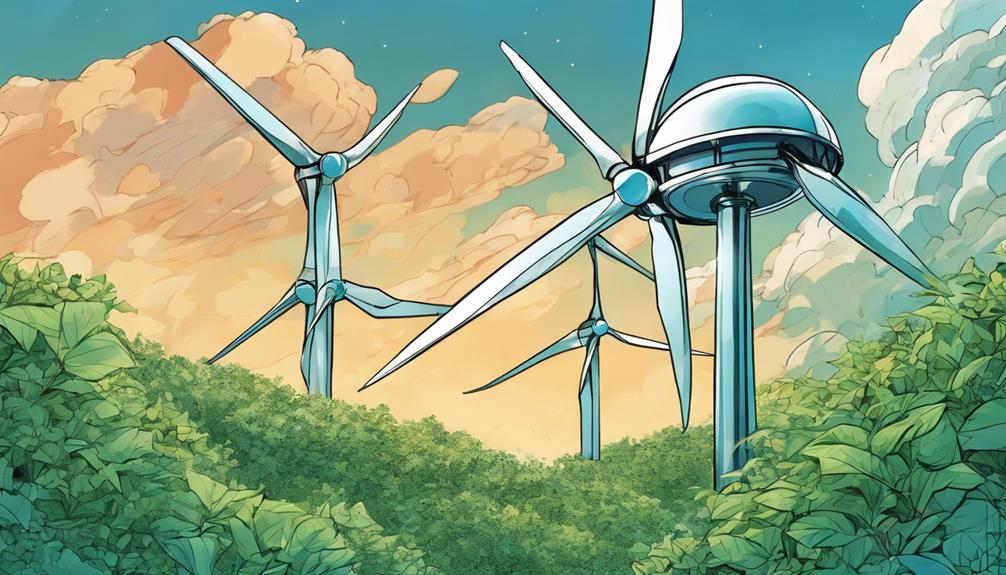
Wind energy's environmental benefits are undeniable, with a single modern turbine capable of offsetting over 2,000 tons of carbon dioxide emissions annually. This significant reduction in greenhouse gas emissions helps combat climate change and supports biodiversity conservation.
Innovations in blade design and materials are further enhancing environmental benefits. Larger turbines with advanced blade configurations are being developed to increase energy production while minimizing visual impact. Additionally, smart technology and predictive maintenance are reducing waste and optimizing turbine performance.
As the industry continues to evolve, researchers are exploring new materials and designs that will further reduce environmental impact. These advancements are essential in creating a sustainable future powered by clean energy.
Frequently Asked Questions
Can Wind Turbines Be Used to Pump Water for Irrigation Purposes?
She explains that wind turbines can indeed be used to pump water for irrigation purposes, leveraging their mechanical energy to drive pumps and providing a sustainable, energy-independent solution for farmers.
How Do Wind Turbines Affect Local Weather Patterns and Precipitation?
They investigate how wind turbines impact local weather patterns and precipitation, finding that turbines can alter wind direction and speed, influencing nearby weather conditions, but the effects are generally minimal and localized.
Are Wind Turbines Capable of Generating Power During Extreme Weather Conditions?
Surprisingly, 75% of wind turbines survive Category 3 hurricanes. Yes, wind turbines are designed to generate power during extreme weather conditions, such as high winds and storms, with built-in features like automatic shut-off and storm-tolerance systems.
Can Wind Turbines Be Designed to Produce Hydrogen Fuel for Vehicles?
They can design wind turbines to produce hydrogen fuel for vehicles by integrating electrolyzers, which split water into hydrogen and oxygen, using excess energy generated by the turbine during off-peak hours.
Do Wind Turbines Have a Significant Impact on Local Property Values?
As the wind whispers secrets to the turbine's blades, a subtle ripple effect is felt in the neighboring homes, where property values, like autumn leaves, may rustle with concern, but studies suggest a negligible impact, a gentle breeze on the market's steady landscape.
What Innovations are Expected in the Future of Wind Turbines?
Innovations in the future of wind turbines are expected to focus on revolutionizing wind turbine mechanics to improve efficiency and sustainability. Advancements in materials, design, and technology will contribute to better performance, reduced maintenance, and increased energy generation, making wind power a more viable and competitive renewable energy source.
What Features Will Be Included in the Future of Wind Turbines?
The future of wind turbines is exciting, with a focus on durability and efficiency. The ultimate roof wind turbine replacement will likely have advanced materials for longevity and improved design to capture even more wind energy. Innovations in blade technology and control systems will also contribute to greater performance.
Is Converting a Ceiling Fan into a Wind Turbine a Viable Option for Renewable Energy?
Converting a ceiling fan into a wind turbine can be a viable option for renewable energy. By utilizing the existing fan blades and motor, you can transform your ceiling fan into a small-scale wind energy generator. This eco-friendly approach could help reduce energy costs and reliance on traditional power sources.
Conclusion
As the last turbine blade rotates into place, a new era of sustainability takes flight.
The future of wind energy unfurls like a canvas of endless possibility, where innovative minds weave a tapestry of efficiency, sustainability, and progress.
The horizon beckons, illuminated by the promise of a cleaner, greener tomorrow, where wind turbines stand tall, sentinels of a brighter, more sustainable future.

